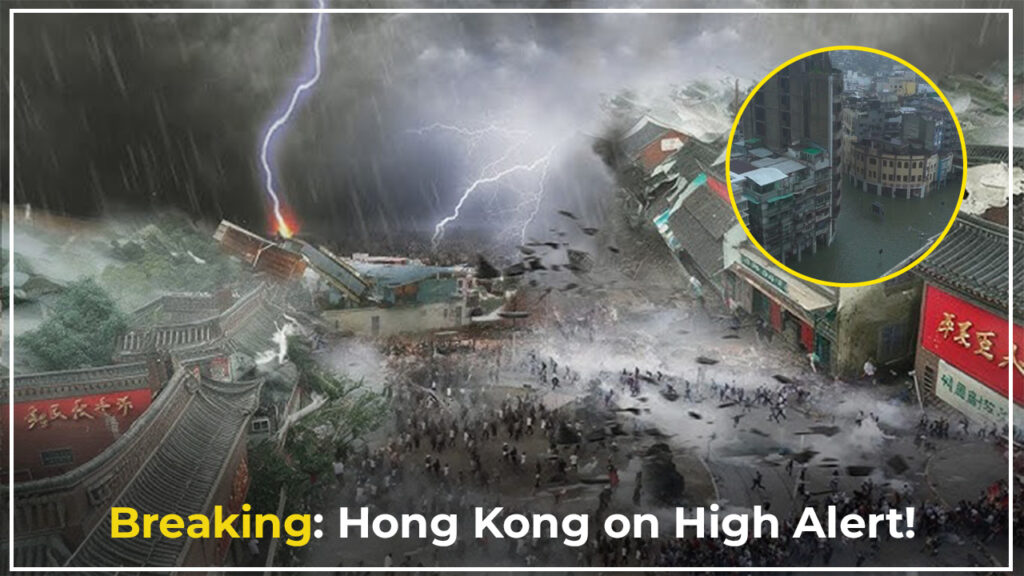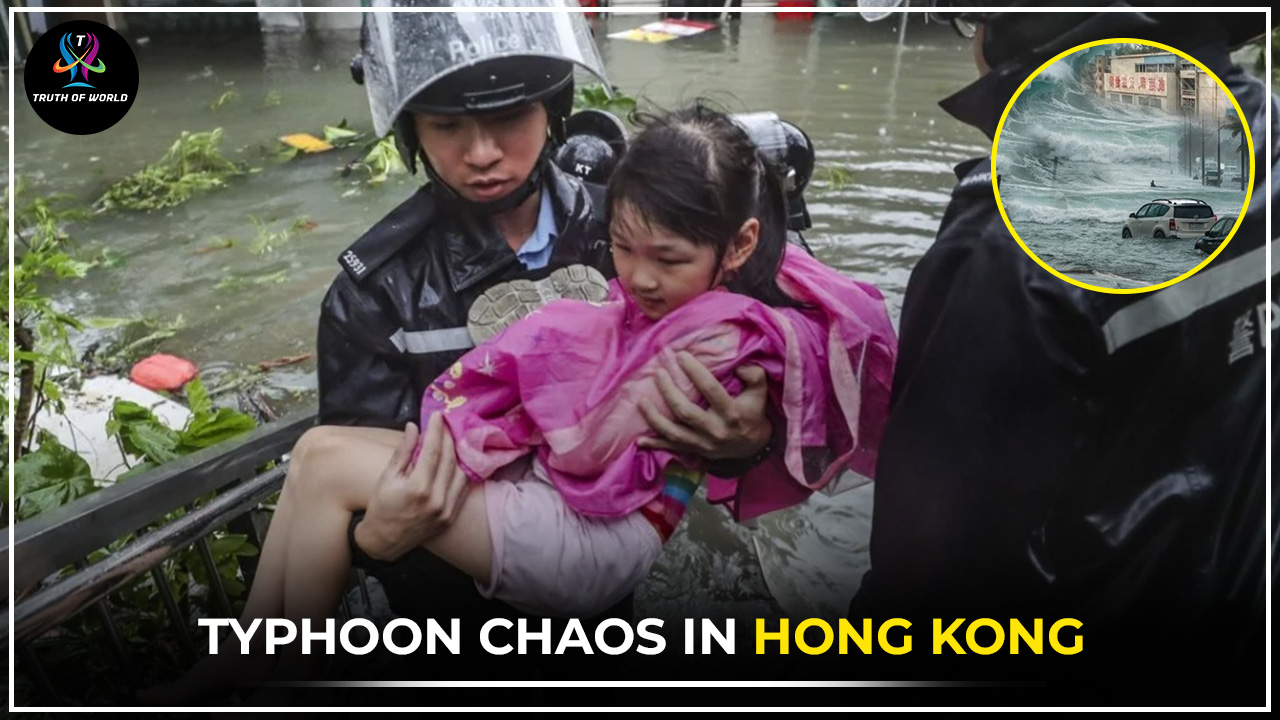Hong Kong, September 24, 2025:
Hong Kong has been placed on high alert as Category 4 Typhoon Ragasa barrels towards the city, threatening heavy rains, destructive winds, and widespread disruption. Authorities have already announced the closure of all schools, while airlines have confirmed that nearly 500 flights will be cancelled or rescheduled in anticipation of the storm.
Massive Disruptions at Hong Kong International Airport
Hong Kong International Airport (HKIA), one of the busiest aviation hubs in the world, is bracing for chaos. Airlines including Cathay Pacific, Hong Kong Airlines, and several international carriers have issued travel advisories. Passengers are urged to check flight schedules online as delays and cancellations mount.
Officials estimate that over 500 flights could be affected over the next 48 hours, making this one of the most significant disruptions of the year.
Airport authorities have set up emergency counters to help stranded passengers, while airlines are working to reroute flights where possible. Travelers are being asked to avoid non-essential travel until the typhoon passes.

Schools and Public Services Suspended
The Hong Kong Education Bureau has announced a full suspension of classes in all schools, kindergartens, and universities starting Wednesday. This precautionary measure is aimed at ensuring student safety amid the storm’s approach.
In addition, several public parks, outdoor markets, and government offices have been temporarily closed. Ferry services between Hong Kong Island and Kowloon have also been scaled down, with only limited routes operating under safety monitoring.
Storm Track and Intensity
According to the Hong Kong Observatory (HKO), Typhoon Ragasa has intensified into a Category 4 storm, with sustained winds of over 210 km/h and gusts surpassing 250 km/h. The storm is currently located about 450 kilometers southeast of Hong Kong and is expected to make its closest approach by late Wednesday night or early Thursday morning.
Meteorologists warn that Ragasa may trigger storm surges, flash floods, and landslides, particularly in low-lying coastal areas. Residents have been urged to secure windows, stock up on essentials, and stay indoors once storm signals are hoisted.
Government Issues Emergency Preparedness Measures
The Hong Kong government has activated its Emergency Response Level, coordinating with police, fire services, hospitals, and civil defense teams. Over 2,000 emergency shelters have been prepared to house those living in vulnerable housing or flood-prone areas.
Authorities are also monitoring reservoirs and drainage systems to minimize the risk of flooding in urban centers. Construction sites have been ordered to suspend work, and cranes across the city’s skyline have been lowered for safety.

Public Transport Adjustments
The MTR Corporation, which manages Hong Kong’s subway system, has announced that underground services will continue with additional safety checks. However, light rail and bus services are expected to face suspensions if wind speeds exceed safe operational limits.
Taxi and ride-hailing services like Uber are preparing for surge pricing due to limited availability, though the government has appealed to drivers to keep fares reasonable during the crisis.
Impact on Businesses and Economy
The looming typhoon is expected to deliver a blow to Hong Kong’s retail and hospitality sectors, particularly with the cancellation of flights affecting tourism. Local businesses, especially restaurants and outdoor markets, are closing early to safeguard employees.
Stock markets are also showing signs of nervousness, with trading volumes dropping as investors anticipate storm-related disruptions. Analysts believe the economic impact could run into hundreds of millions of dollars, depending on the scale of damage.
Voices from the Ground
Residents are rushing to supermarkets and convenience stores to stock up on essentials such as water, bread, instant noodles, and batteries.
We’ve been through many typhoons, but this one feels more dangerous because of its speed and intensity,” said Mei Ling, a shopkeeper in Kowloon.
The government is doing the right thing by shutting schools and warning us early,” added Chan Wai, a parent preparing emergency supplies for his family.
Foreign consulates, including those of the United States, United Kingdom, and Australia, have issued travel advisories to their citizens, warning them to avoid non-essential travel to Hong Kong until conditions stabilize. Airlines operating long-haul flights between Hong Kong, Europe, and North America are expected to see significant delays.
Weather experts emphasize that climate change has contributed to the increasing frequency and intensity of tropical storms in the South China Sea. Ragasa, in particular, has developed rapidly in just a few days, raising concerns about the unpredictability of storm behavior.
Dr. Li Cheng, a climate scientist at the University of Hong Kong, stated:
“Typhoon Ragasa’s rapid intensification shows us the growing risks associated with warmer ocean waters. Hong Kong and neighboring regions need stronger adaptation strategies to face such extreme events.”
Typhoon Ragasa’s full impact will be clearer in the next 48 hours. While Hong Kong prepares for the worst, officials are urging calm and cooperation.
The city’s resilience has been tested by major storms before, such as Typhoon Mangkhut in 2018, but Ragasa’s scale has already made it one of the most severe threats in recent years.
Hong Kong is now bracing for what could be a historic weather event. With schools closed, flights grounded, and emergency measures in full swing, the city stands united in preparing for Typhoon Ragasa. The next few days will be critical in determining the extent of damage and disruption.




